Pentagon Building – Everything About the Pentagon’s History
The Pentagon Building is one of the most famous military buildings in the world, and thanks to its place in American popular culture, it is perhaps the most famous of all military buildings. In this article, we examine and discuss the history and purpose of the Pentagon Building, the reasons for the layout and pentagonal shape of the structure as a whole, its current uses and accessibility, and some of the significant events that have specifically occurred with regards to the building itself. Keep reading to learn more about the Pentagon Building!
Contents
A Look at the Pentagon Building
| Architect | George Bergstrom (1876 – 1955) and David J. Witmer (1888 – 1973) |
| Date Constructed | 1941 – 1943 |
| Function | Military headquarters |
| Materials Used | Concrete and limestone |
| Height | 23 m (or 77 ft) |
| Location | Arlington County, Virginia, United States |
In our world, there are a few structures that become a form of metonymy, or a singular thing or idea that becomes representative of something larger. For instance, when one thinks of a crown, one thinks of the monarchy associated with that crown. By that same token, when someone thinks about the American military, there tends to be a direct association between that and the Pentagon. In the United States, the building known as the White House is both a physical structure and a representation of the United States executive branch of government as a whole. The same is true of the Pentagon.
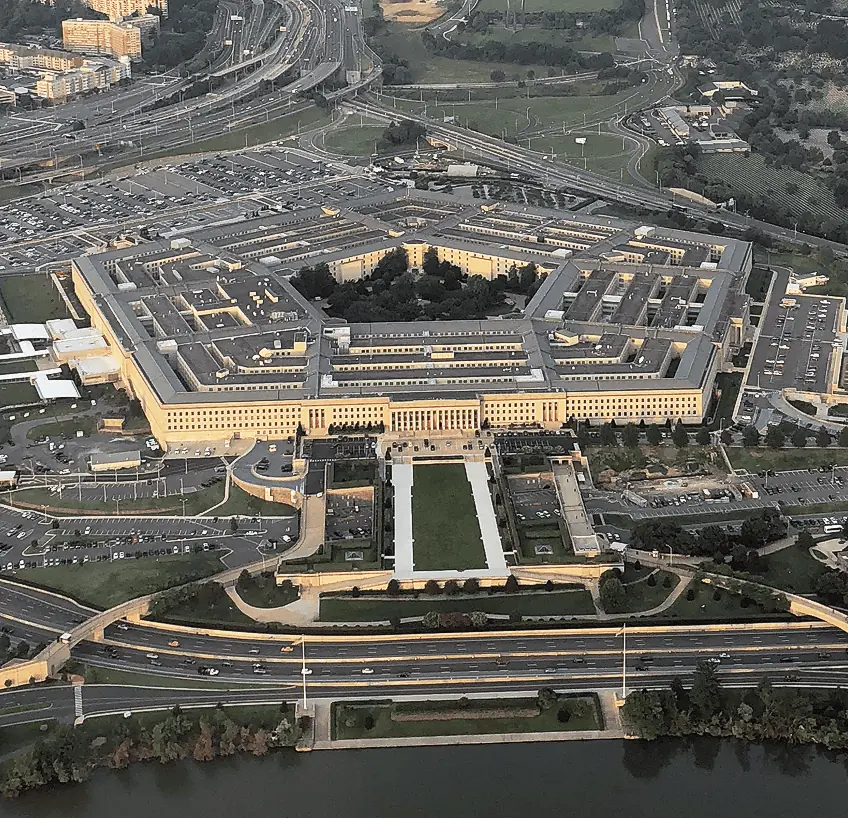
We have been somewhat trained by American popular culture, which is the vast majority of internationally available popular culture, that the “Pentagon” is the place where all the military decisions are made. The Pentagon is the place where military leaders declare wars and report on whichever DEFCON level the country happens to be at whenever there is a conflict of some kind. Movies especially love to show us at the highest stages of the DEFCON system when some unimaginable force attacks the world. The Pentagon is the principal defense against it all. However, this is all talking about the Pentagon in remarkably abstract terms. What about the actual Pentagon Building? As in, the actual pentagonal structure in which the head of the American military is located?
That is what the Pentagon is, it’s just a building. It is the building in which the Department of Defense is headquartered, and it was designed specifically as the home of the War Department during the Second World War. This physical building is situated across from the Potomac River in Washington, D.C., and so it is located in the capital city of the United States.
The Pentagon, thanks to its immense size and influence, led to additional developments around the site, such as a location known as Pentagon City as well as various residential and commercial districts. In addition, the building is close to the Arlington National Cemetery, which is the primary military cemetery that is also so well-known to viewers of American popular culture as the location in which American soldiers are buried. The Pentagon, in very real terms, is the American military. It represents and controls the military, it contains the secrets and command parameters for everything to do with American military operations, but what about the building? Let’s have a look at what makes the building tick and why it has that distinctive shape that it happens to possess.
History of the Pentagon Building
The history of the Pentagon Building is essentially the history of the Department of Defense. This department began after the creation of the Pentagon, but its predecessor needed a place to call its home. So, when the Second World War was raging in Europe, but before the American military entered the war, construction started on this now-iconic structure. At the time, Franklin D. Roosevelt was the President of the United States, and while the American government did not yet have the public will necessary to enter the war, the probability of it beginning was becoming an ever-increasing possibility. The United States had sided with the Allied Forces in the First World War, and if the war reached America, then Roosevelt would likely join on the side of Britain and France, its old allies.
The groundbreaking for the Pentagon Building occurred only a few months before the attack on Pearl Harbor gave Roosevelt the necessary justification to commit American troops to the war, and so the construction of this building seemingly occurred just in time. So, let’s have a look at that history.
Construction and Design
There had been plans for some time to develop a central military headquarters in the United States that could properly serve the functions of the military, but the actual Pentagon history only started on 11 September 1941. This was only a few months before the surprise attack on Pearl Harbor, and the work commenced shortly after a final plan had been drawn up. So, when was the Pentagon built? The plans started much earlier than the construction began, but once the construction began in 1941, it would take less than two years to complete it.
The site started construction while plans were being designed, and once the attack on Pearl Harbor occurred, there were increased calls to hurry things along and get this new headquarters up and running so that the American government could have a central location from which to properly plan out their military excursions in the rapidly progressing war in Europe.
The architect in charge of the design was George Bergstrom, and he designed the structure around a pentagonal design for reasons that will be discussed in more detail below. The design and construction sped up during this period, and there were over 15,000 workers employed to construct the building, and they did so around the clock to get it done in time.
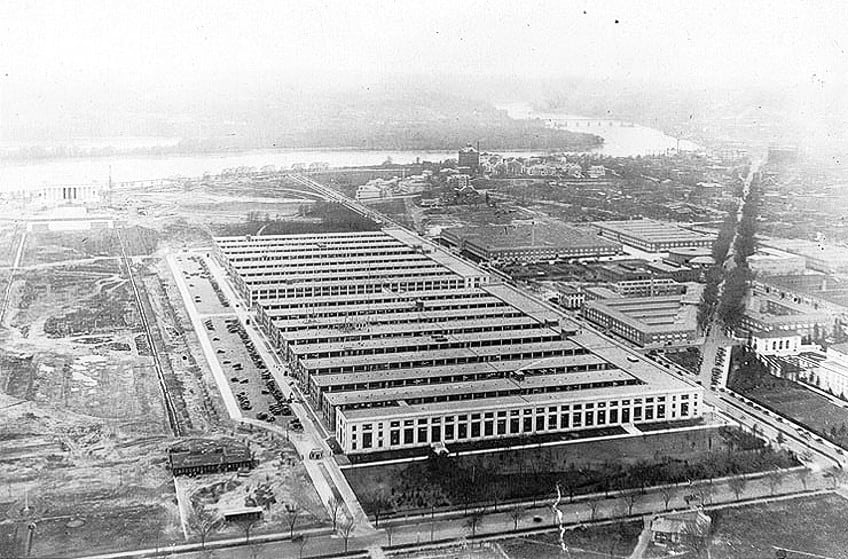
This is a large building, and for those who have never actually seen its incredible scale, it is not the kind of building that could ordinarily be finished in such a rapid period. However, it was completed in 16 months. The building was done by 15 January 1943. It was also constructed on a ballooned budget, but the rapid speed at which it was constructed no doubt compensated for the otherwise more-than-doubling of the initially budgeted costs.
The Pentagon Building was officially completed in time for the war to truly ramp up.
Early Years of the Building
In the earliest years of the Pentagon Building, it was made to house the War Department, the predecessor to the Department of Defense, and it played an integral role in the strategic response to the wars in Europe and the Pacific. In these first few years, the Pentagon Building was the location from which the offensive of the Axis Forces in the Second World War was counteracted and ultimately stopped. After the war, the Pentagon Building became the primary position from which the United States maintained its warlike stance towards the Soviet Union throughout the Cold War.
Harry S. Truman, the next President of the United States, officially founded the Department of Defense, it had its new home. The Pentagon Building has housed the Department of Defense ever since it was created in 1947.
Significant Events That Occurred at the Pentagon
As the Pentagon Building has been the primary location from which wartime decisions have been made in the United States, it is easy to answer the question: what is the Pentagon used for? It has been in use since the late-1940s as the central war department for the country, but the decision-making of a military is still, ultimately, a bureaucratic endeavor. This means that nothing all that much happens at the actual structure. The military leaders and strategists who work in the Pentagon Building transmit their orders outside the confines of the pentagonal structure and nothing all that much happens within its walls. However, this all came to an end in 2001. There tends to be a partial clouding of history with regard to the infamous 9/11 terror attacks in the United States. There is generally the view that al-Qaeda-aligned terrorists hijacked and flew a plane into the Twin Towers in New York City, but this was not the only location of an attack.
A lesser-known attack struck the Pentagon Building. Several of the terrorists from the same organization hijacked American Airlines Flight 77 and piloted said plane directly into the western portion of the building. These five terrorists killed themselves in the process alongside the 59 people who died on the plane and the 125 people who were in that portion of the building and were incapable of getting to safety in time. This is significantly fewer deaths than the attack on the Twin Towers, which killed nearly 3000 people, and that attack is also likely better known because it was a civilian target rather than a military one.
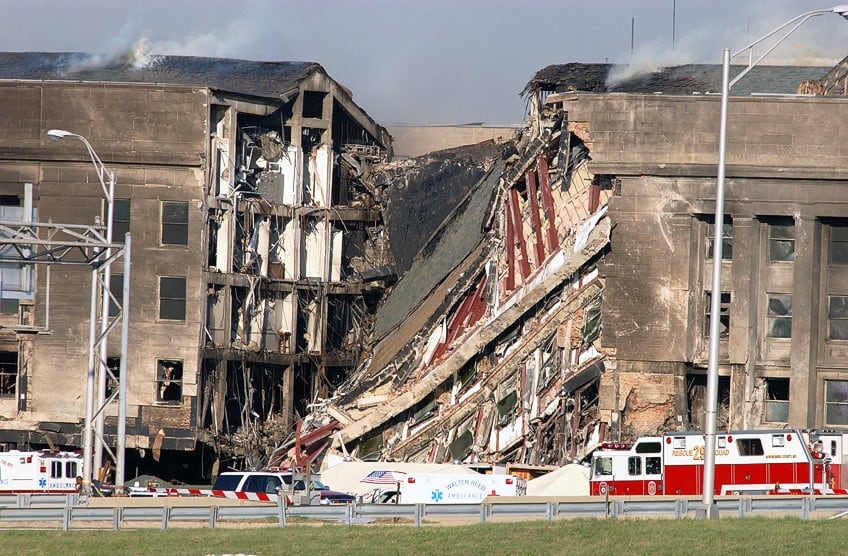
Either way, the 9/11 terror attacks in 2001 specifically targeted the Pentagon Building and severely damaged a large portion of the structure. That section of the building was quickly rebuilt, but in the wake of the many deaths on account of the attack, the Pentagon Memorial was erected. This memorial structure is freely accessible every day of the week and it can be visited in a personal capacity without any option of a tour as it is meant to be a place of remembrance rather than a tourist attraction of any description. This is, by far, the most significant event to occur at the Pentagon Building, but there have been other, lesser-known events at the site, such as the Pentagon’s central position as a protest-worthy structure during the 1960s anti-war movement. There were various protests at the site on numerous occasions, and it is also the location of one of the most famous American protest images to have ever been produced.
The image of American troops holding their guns at the ready in preparation to open fire on protestors, and various protestors approached the raised guns of the soldiers and placed carnations into the barrels. This famous image has gone on to become representative of the American anti-war protests during the 1960s, and it is likely the most famous event, outside of the terror attacks of 9/11, to have occurred at the actual building.
Design and Architecture of the Pentagon Building
The Pentagon Building’s history is one of both military administration and tragedy, but what about the building itself? Why is the Pentagon shaped like a pentagon? Where is the Pentagon Building physically located? How many floors does the Pentagon have? All of these questions, and more, will be answered in the sections below. The Pentagon Building is an absolutely massive structure that takes up about 150 acres of room and it is, by far, the largest office building in the entire world. It is a gargantuan structure that can sustain a workforce of over 23,000 military and civilian primary staff alongside an additional 3000 support staff.
This building can house as many people as some of the largest skyscrapers in the world, but rather than doing so in a vertical capacity, it does so in a horizontal one.
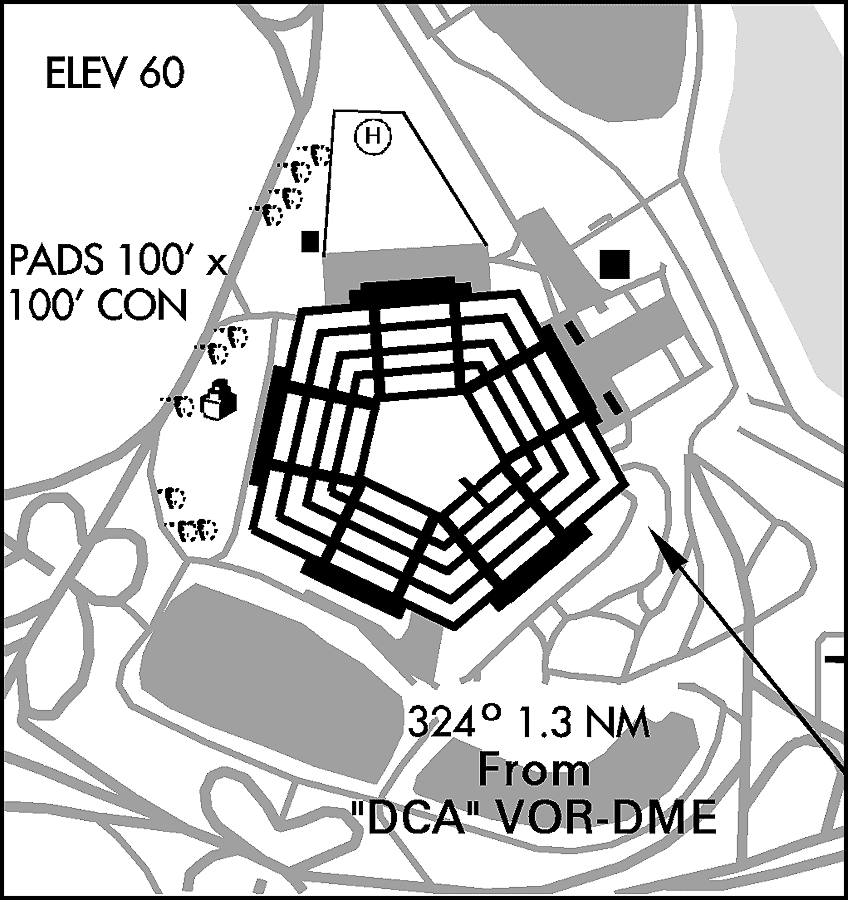
The Pentagon Building is also not necessarily a short structure as it does rise five floors above ground with an additional two basement floors below ground, for a total of seven floors in all. However, a height of five stories up does not usually impress many people. What is likely more impressive is that the building includes, within its many walls, a total of 28.2 km (or 17.5 mi) worth of corridors alongside the central plaza area which is five acres in size. The sheer size of the Pentagon Building in total is staggering to behold, and it puts all other office structures to shame with its incredibly large surface area and general design. So, what about its actual design then?
Overview of the Building’s Design
The size of the Pentagon Building is so massive that it has six of its own ZIP codes. There is one for the Secretary of Defense and others for the other branches, like the Joint Chief of Staff. So, this building is so big that it has a collection of possible postal and locational codes. But why is the Pentagon shaped like a pentagon? These ZIP codes do not answer this peculiar question. The reason for it is rather simple, but also strange. When the Pentagon Building was first being planned out, the location that had been chosen was Arlington Farms. This plot of land had an irregular shape as it was in a pentagonal shape. However, there were concerns about how this massive building would obstruct views, so the building was moved to a different location so that it wouldn’t cause this issue.
The new site did not have a pentagonal shape, but President Roosevelt liked the design and so he ordered that it be retained. To redesign it at that point would have also added additional wait times to the proceedings, and they were about to enter a costly war, so it was important to get this military installation done as quickly as possible. The building was soon underway into a perfect pentagonal shape with five points made to look like forts. The Pentagon Building finally had its eventual shape and design.
Architectural Features of the Building
When the Pentagon Building was being designed, there were various requirements put in place to ensure that it adhered to certain wartime necessities. Steel is an important material in war as it is used to make all manner of military devices, and so the Pentagon Building needed to use as little steel as possible. Steel is perfect for immensely tall building structures, but if the building was kept at a lower height while simply expanding on the horizontal aspects, then steel would become far less necessary as a construction material. To cover the architecturally large space needed for the construction of the Pentagon Building, the government needed to acquire additional land at inflated costs. However, this was eventually done, and the building had all the land it needed to become the massive structure that still stands to this day.
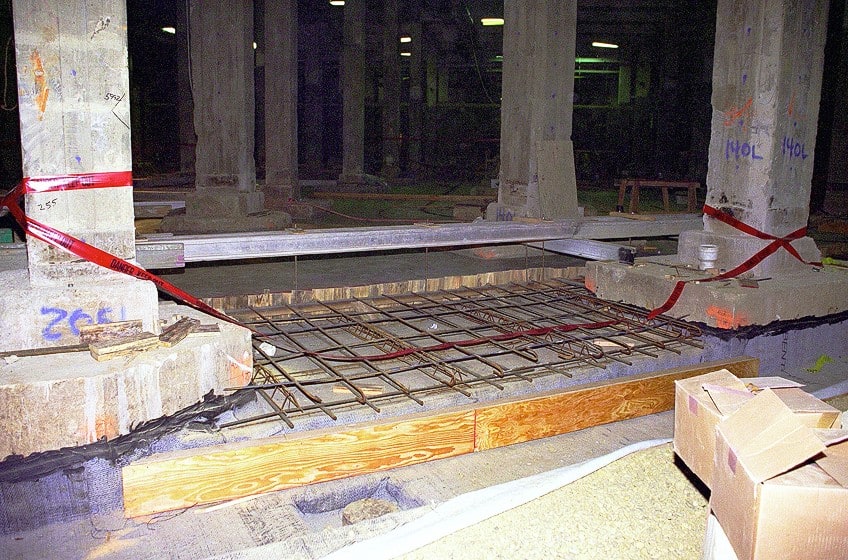
Materials Used in the Construction
The Pentagon Building was constructed using steel, although there was a minimal amount of steel used as was discussed in the previous section. Aside from steel, the building made use of reinforced concrete in its general design with a massive amount of sand being taken from the nearby Potomac River to aid in the construction and to further add to the lack of steel, the building made use of ramps rather than elevators. Lastly, the façade of the gigantic building made use of limestone throughout its construction.
This gave the Pentagon Building its ultimate external color and general appearance. The Pentagon was officially completed.
The Layout of the Pentagon Building
The Pentagon Building needed to be built when it was first proposed. There was a war happening in Europe and the War Department needed a larger space that it could call its own. It has already been stated that the reason for the pentagonal shape of the building was because it was preferred by the president at the time, and this certainly is true, but there were other advantages to the building having this shape. So, let’s ask that question again: why is the Pentagon shaped like a pentagon?
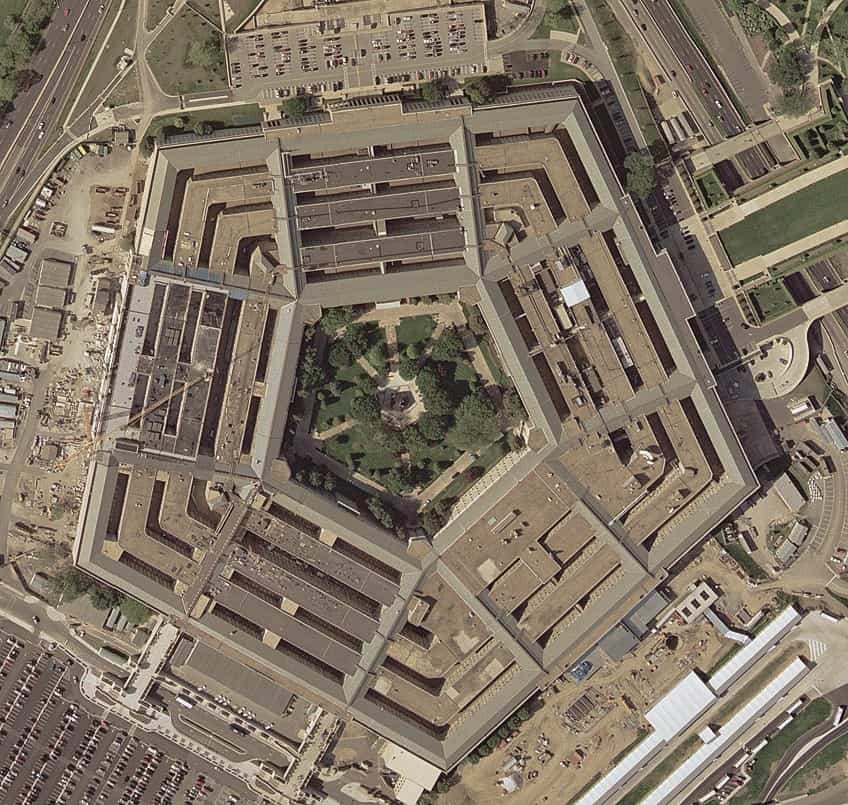
Overview of the Building’s Layout
The Pentagon Building is, quite famously, arranged in a pentagonal shape, and this shape allows the building to have five distinct entrances. In addition, the immense size of the building allows it to have its own gigantic plaza, heliport, and even its own train station. This military structure is truly gargantuan in its scope. However, thanks to the more ergonomic design, it does not actually take all that long to get anywhere in the building. It takes, on average, less than ten minutes to walk from one side of the structure to the other. This is, of course, provided that optimal routes and a faster-than-a-stroll speed is taken.
So, it may be a massive structure, but it is designed in such a way that it’s surprisingly speedy to get around. It also helps that the building contains many additional amenities for its staff, such as gyms, prayer rooms, and eateries.
Description of Each of the Five Pentagon Rings
The most striking aspect of the design is the use of the pentagonal design to create five distinct rings that are concentric in their application, and each of these concentric rings is constructed to perform a certain function. These functions will be discussed below, but the rings themselves are arranged in a fortlike style that allows each of them to give off an even greater militaristic appearance. These rings are labeled as A to E, and each ring makes use of office numbers that are arranged in a clockwise capacity, and each of these rings is connected through a series of “spoke-like” corridors. But what are each of these rings actually used for?
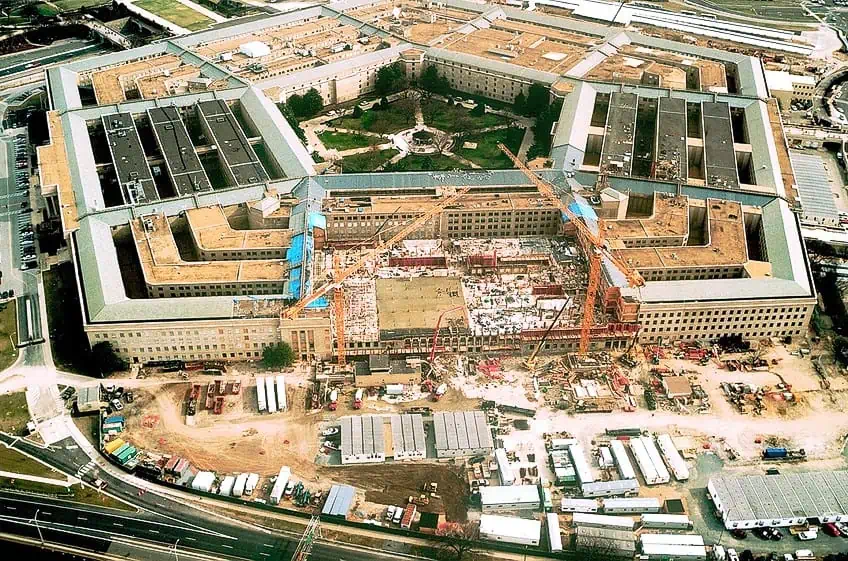
The Purpose and Functions of Each Ring
As has been stated, the five distinctive concentric rings around which the general layout of the Pentagon Building is arranged allow each of these rings to have five above-ground floors as well as two below-ground floors. Each ring serves a distinct purpose, so what are those purposes? Ring A is the ring that is used by the most senior officials, such as the Secretary of Defense and his general department. The next one, Ring B, is comprised of various offices that are used for several different defense agencies, such as the Office of the Inspector General. Ring C contains numerous offices that are occupied by those in direct military command, such as army and navy services. Ring D, on the other hand, is a support function ring made up of finance, legal, and other assorted departments. Lastly, Ring E, which is the final ring, is made up of operational units for the structure itself like the Pentagon Library and the Pentagon Athletic Center.
Each of these rings, as has been shown, has a very specific function, and those functions are necessary to the overall functioning of the Pentagon Building and the Department of Defense as a whole. These rings have maintained these uses and others for decades, but that doesn’t mean that the Pentagon has vastly different goals today than it once had.
The Pentagon Today
In the modern day, the Pentagon Building still houses the Department of Defense, and there are no plans to change that at any point in the future. The building has become one of the most iconic and secure structures in the entire world, and so it will likely continue to fulfill its militaristic functions for the indefinite future.
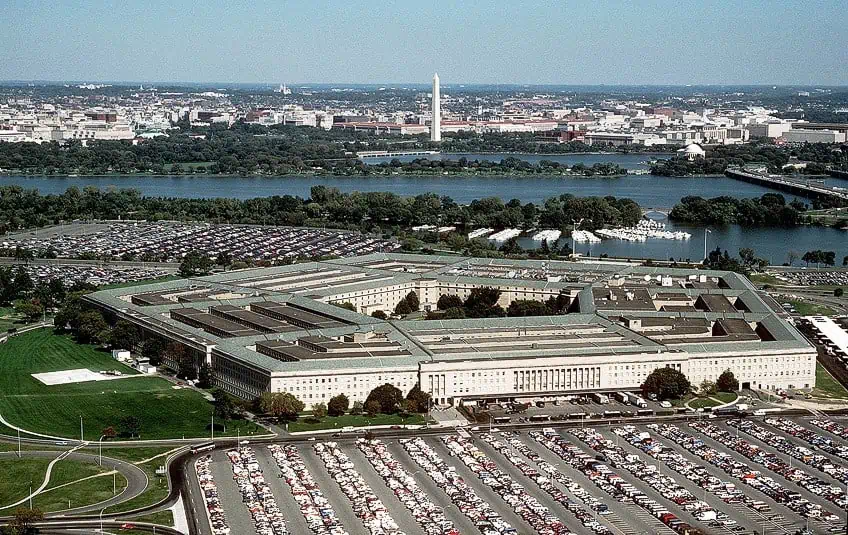
Current Occupants and Functions of the Building
The Pentagon Building is the workplace of a gigantic amount of people. The structure can hold 23,000 standard employees alongside the 3000 support staff that it also employs. These current occupants ensure that the Pentagon Building maintains its functions according to the five concentric rings discussed previously.
A building such as this needs to be a well-oiled machine, and these many staff members no doubt ensure that this is the case.
Security Measures and Protocols
The Pentagon Building has always been a rather secure structure as it is a military establishment, but after the terrorist attacks of 9/11, the building’s security was expanded. There are special roads only accessible to Pentagon staff, security screening for everyone entering, a prohibition on all photography, various measures that can lock into place if there are biological, militaristic, or even nuclear attacks, and there are even reinforced structures within the building itself and Kevlar inserted between the windows to ensure that physical attacks fail. The Pentagon Building is, without a doubt, one of the most secure locations on the planet. Regardless of this, the plaza has received a bit of a nickname. It has been called “ground zero” because it is, quite likely, the spot that would be targeted first if a nuclear strike were to be launched against the United States. It is the nerve center of the American military, after all.
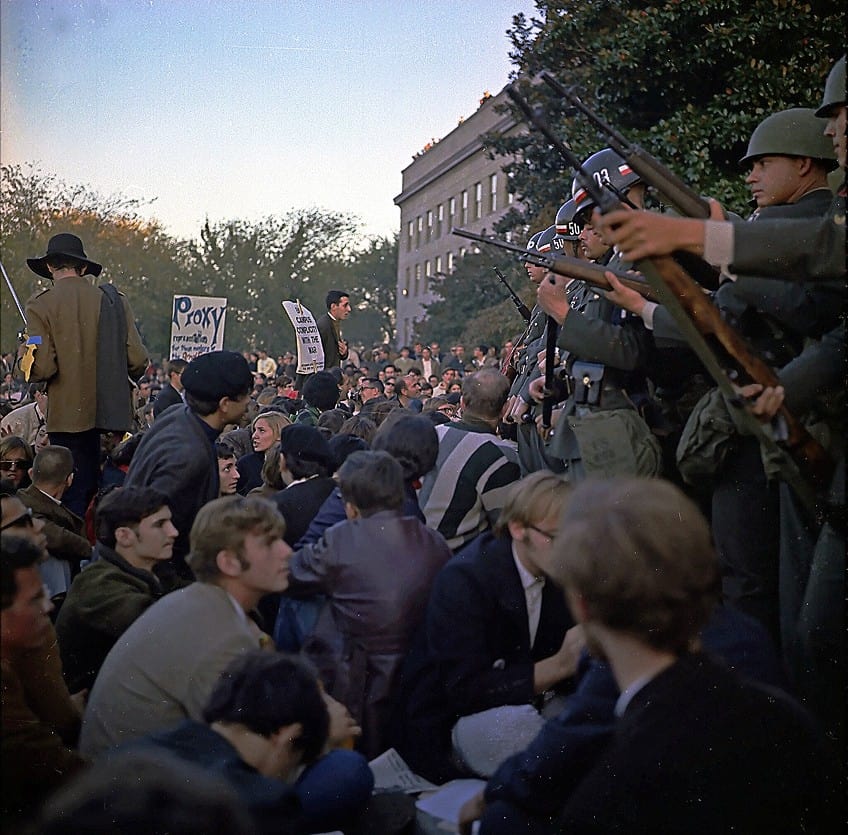
Renovation Projects and Upgrades
There have been a few renovation projects at the Pentagon Building over the years, the largest of which was the Pentagon Renovation Program, which was a long-term project that started in the 1990s and only concluded in 2011. These were often because of general wear and tear and a need to renovate. This was also because the building is old, and when it was first built, it didn’t actually have any space for computers or digital phone systems. It is older than any of that kind of technology. So, it needed to be renovated to maintain its place as a military stronghold in the United States. In addition to this, as has been mentioned in the section above, the Pentagon Building underwent certain security upgrades in the wake of the 9/11 terrorist attacks.
These were not the same kind of “quality of life” improvements that the main renovation project promised but were instead an attempt to protect the building from new threats that were considered to have arisen in the wake of those attacks.
The Significance of the Pentagon Building
The Pentagon Building is one of the most famous structures in the United States. It has this reputation because of its metonymic existence as the American military building, but it has also played a major cultural and historical role in the country. Let’s have a look at some of that significance.
Political and Military Significance
The political and military significance of the Pentagon Building is rather obvious. It is the actual headquarters of the Department of Defense. This is the most important building for the American military in the entire country. Without the Pentagon, the entire military could, theoretically, crumble without any guidance. So, the Pentagon Building is rather significant for that sole reason.

Historical Significance
When it comes to the history of this building though, there are two very interesting aspects. When the Cold War was in full swing, the Pentagon Building was considered to be ground zero for a possible Russian nuclear assault. This meant that the Pentagon was at the center of the Red Scare that gripped the United States for several decades as the Cold War continued. The Pentagon and the White House were likely the two buildings most associated with the Cold War (or at least on the American side, in the USSR, that honor would go to the Kremlin). This building represented the Cold War, and that ideological conflict dominated much of the 20th century.
Another fascinating historical aspect of this building is its bathrooms. There are double the ordinary number of bathrooms in this building. Bathrooms are not something we would usually associate with historical significance, but in this case, the Pentagon Building is technically located in Virginia.
Virginia was one of the states that made use of Jim Crow laws, so there were racially segregated bathrooms. Upon inspecting the building for the first time, Roosevelt ordered the desegregation of the building because, while the state itself could choose segregated laws, all federal buildings fell under federal law. This meant that the Pentagon Building was the only structure in Virginia in which segregation laws were not rendered illegal.
Cultural Significance
The Pentagon Building has become a staple in American popular culture. This structure can be seen in many films and other pieces of media, and it has come to represent the American military. The term “the Pentagon” is simply a stand-in for the American military at this point, but this is not the only cultural influence that the Pentagon exerts. The building itself may have been shown off in many films, but the Pentagon as an institution has far more sway. The Department of Defense has a working relationship with Hollywood. There are certain requirements that this department enforces when any films want to exhibit realistic militaristic equipment because if you want your movie to look real, you probably want real uniforms and tanks, and weapons. The Pentagon allows this to happen, but only in exchange for certain theatrics. There’s a reason so few Hollywood films are directly critical of the American military, and it’s because the military helps fund them and provides them with the tools necessary to create a realistic film.
So, the cultural influence expands far beyond the building itself. For instance, the Pentagon forced films like the 2003 Hulk movie and the 2013 Man of Steel movie to use specific fighter jets in a positive light. Essentially, the Pentagon controls certain aspects of military propaganda to this day, and it will continue to do so.
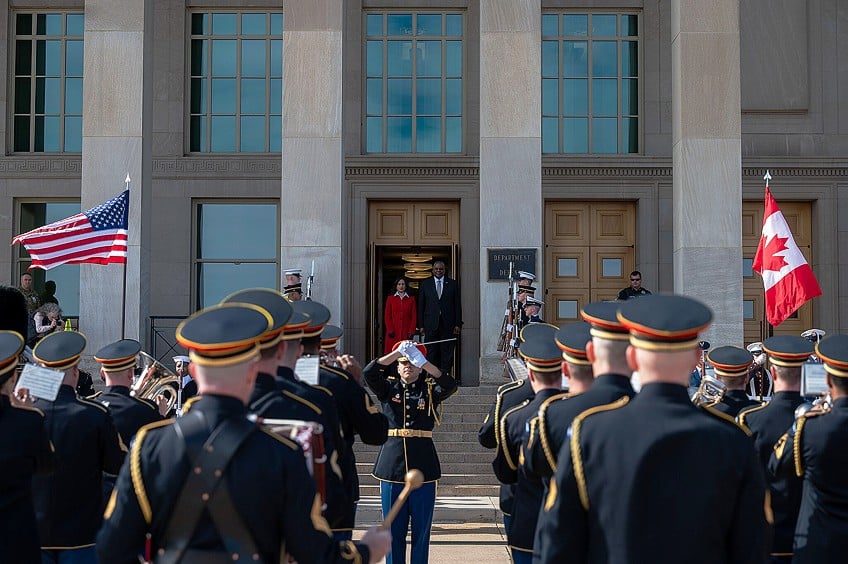
We have come to the end of our discussion about the Pentagon Building. We have examined the history and design of this famous military structure, the reasons for its general pentagonal layout, its current and past functions, and some of the significant events that have occurred at this building over the years. Hopefully, you learned a great deal about this famous American building, and we hope that you learn even more about a variety of other structures!
Frequently Asked Questions
What Is the Pentagon Used For?
It may be best to first ask another question: when was the Pentagon built? The Pentagon Building has been used, ever since it was completed in 1943, as the headquarters of the American military. This means that ever since its construction, the Pentagon Building has been the location in which the American military has stationed its most important figures. This building is one of the most secure in the country, and it has controlled American military interests for eight decades at the time of writing.
How Big Is the Pentagon Building?
The Pentagon Building is a truly gargantuan structure. It is made up of 150 acres of land and within its walls, there are 28.2 km (or 17.5 mi) worth of corridors. However, how many floors does the Pentagon have? Well, it has seven. Two of them are below ground and five of them are above, and this gives the building a height of 23 m (or 77 ft). All in all, the Pentagon Building, while not being a particularly tall building, is an absolutely massive one, and so it has well-earned its reputation as the largest office building in the world.
How Many People Work in the Pentagon Building?
Thanks to the immense size of the Pentagon Building, this structure can house an incredibly large workforce. In this case, the building can facilitate 23,000 regular employees of both military and civilian functions, alongside an additional 3000 support staff. It takes thousands upon thousands of people to maintain a building of this sheer size and scope.
Is the Pentagon Building Open to the Public?
The Pentagon Building is open to the public but in a limited capacity. A regular person cannot enter the classified regions of the building, where classified military intelligence is dissected and wartime decisions are made, but some tours can be scheduled in advance. These are on Tuesdays and Thursdays, so there is very limited time to visit the building itself if that is desired. However, where is the Pentagon Building physically located? This building is located in Arlington, and so while the building itself is quite restricted, there are various other places to visit around it, such as the Arlington Cemetery and the Pentagon Memorial.
Why Does the Pentagon Building Have Its Shape?
The Pentagon Building has the shape that has informed its name because the building was originally meant to be constructed on a piece of land that happened to be arranged in a pentagonal shape. When the proposed location for the site changed, the pentagon shape remained the same because it was unique and preferred by the president at the time. It also allowed for certain advantages, such as decreasing walking distance and increasing natural light. The shape of the building would help to shape the Pentagon’s history for years to come.
Justin van Huyssteen is a writer, academic, and educator from Cape Town, South Africa. He holds a master’s degree in Theory of Literature. His primary focus in this field is the analysis of artistic objects through a number of theoretical lenses. His predominant theoretical areas of interest include narratology and critical theory in general, with a particular focus on animal studies. Other than academia, he is a novelist, game reviewer, and freelance writer. Justin’s preferred architectural movements include the more modern and postmodern types of architecture, such as Bauhaus, Art Nouveau, Art Deco, Brutalist, and Futurist varieties like sustainable architecture. Justin is working for artfilemagazine as an author and content writer since 2022. He is responsible for all blog posts about architecture.
Learn more about Justin van Huyssteen and about us.
Cite this Article
Justin, van Huyssteen, “Pentagon Building – Everything About the Pentagon’s History.” artfilemagazine – Your Online Art Source. June 7, 2023. URL: https://artfilemagazine.com/pentagon-building/
van Huyssteen, J. (2023, 7 June). Pentagon Building – Everything About the Pentagon’s History. artfilemagazine – Your Online Art Source. https://artfilemagazine.com/pentagon-building/
van Huyssteen, Justin. “Pentagon Building – Everything About the Pentagon’s History.” artfilemagazine – Your Online Art Source, June 7, 2023. https://artfilemagazine.com/pentagon-building/.


